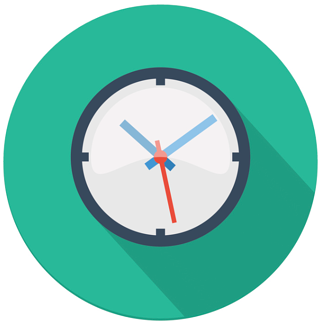3 Time-wasting Habits to Prohibit From Your Optometric Practice
To run an optimized optometric practice, you and your staff need to have procedures and processes in place that enhance efficiency throughout the office workflow. Unfortunately, many of practices are unable to streamline their office workflow because of the time-wasting processes that disrupt efficiency.
In this post, we reveal some major time-wasting habits that are disrupting your practice's ability to increase efficiency thoughout your optometric practice.
Is Your Optometric Practice Making These Efficiency Errors?
Using The Phone To Schedule Appointments
If you have a large patient database, then calling patients to remind them about upcoming appointments can take up a lot of your staff's time. Additionally, if calling your practice is the only way that your patients can schedule an appointment, then your front office is forced to spend a lot of their day on the phone, and not on assisting the patients in the office.
Using a cloud-based practice management and EHR solution, you can empower your patients to schedule appointments through the secure patient portal, and enable your front office to use the built-in patient recall system to send automated recall messages based on the patient's preferred mode of communication.
Entering Patient Data Manually
Entering patient information manually creates a lot of duplicate work. Even though a practice must be meticulous with documenting exam findings and collecting pre-appointment paperwork, you shouldn't have to reenter the information repeatedly throughout the patient's appointment.
If you give your patient access to a patient portal where they can fill out their pre-appointment paperwork before the appointment, you can reduce bottlenecks in your office workflow and shorten the time the patient spends in the waiting room. Additionally, if the patient portal connects to your practice management and EHR solution, then the data they enter is automatically pulled into the system, reducing the amount information your staff has to enter.
Another way your practice can cut down of duplicated data entry is by using an EHR with clinical decision support. With clinical decision support, a single entry made during annotation can populate fields with diagnosis, treatments, orders, testing, and patient education materials all based on eyecare industry best practices.
Switching Between Software
If you made the switch from paper, then you're on the right track. However, the list of cloud-based solutions required to run a successful, modern optometric practice continues to grow. Implementing multiple stand-alone, cloud-based solutions into your practice creates complexities like having to remember different logins, learn various applications, and maintain the connectivity of all the solutions. Utilizing a cloud-based system that is embedded with many of the solutions your practice already uses to run your practice not only saves you money, but also eliminates some of the complexities and helps streamline your office workflow.
For more tips on how you can streamline your office workflow, download our ebook on practice efficiency.

